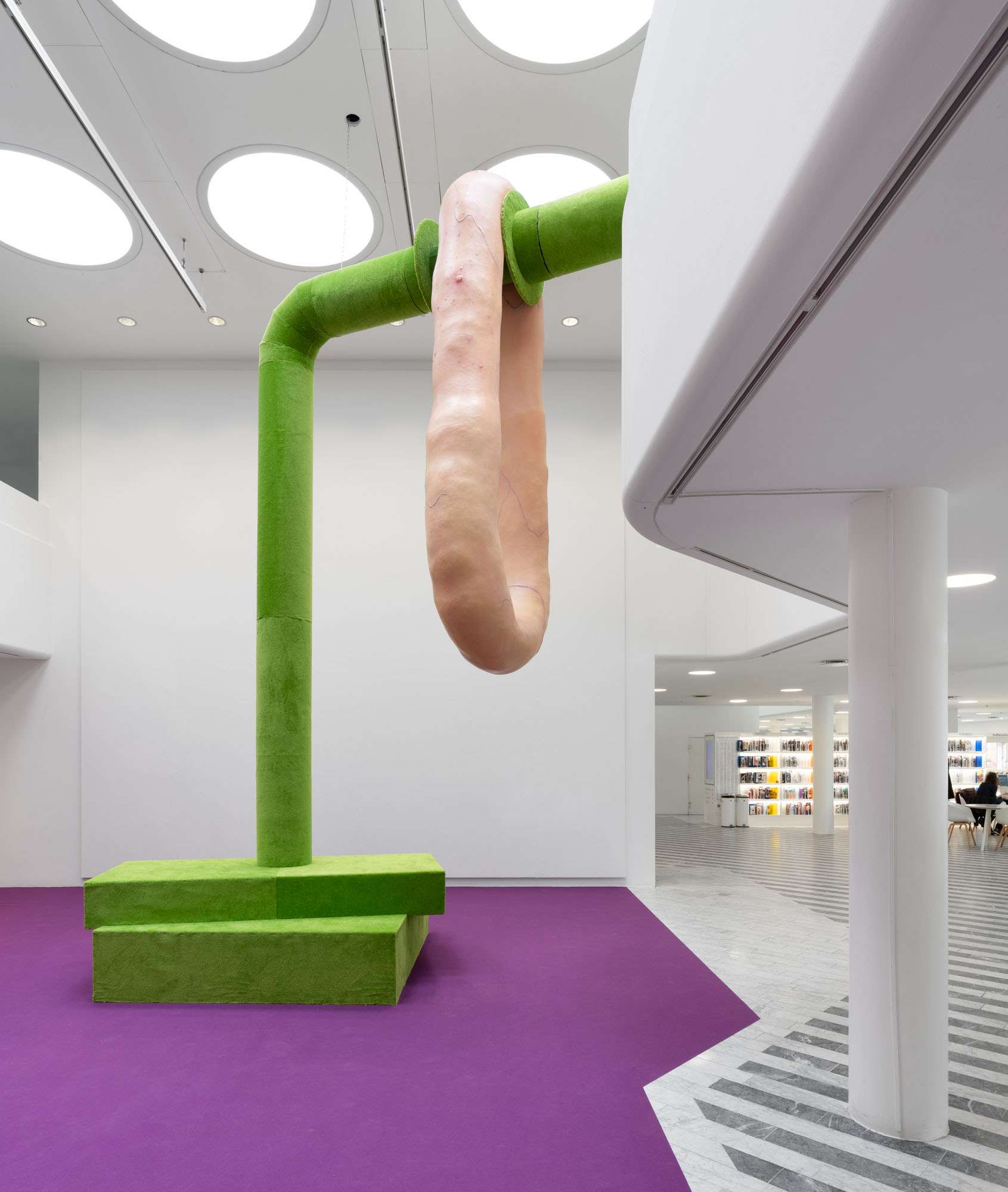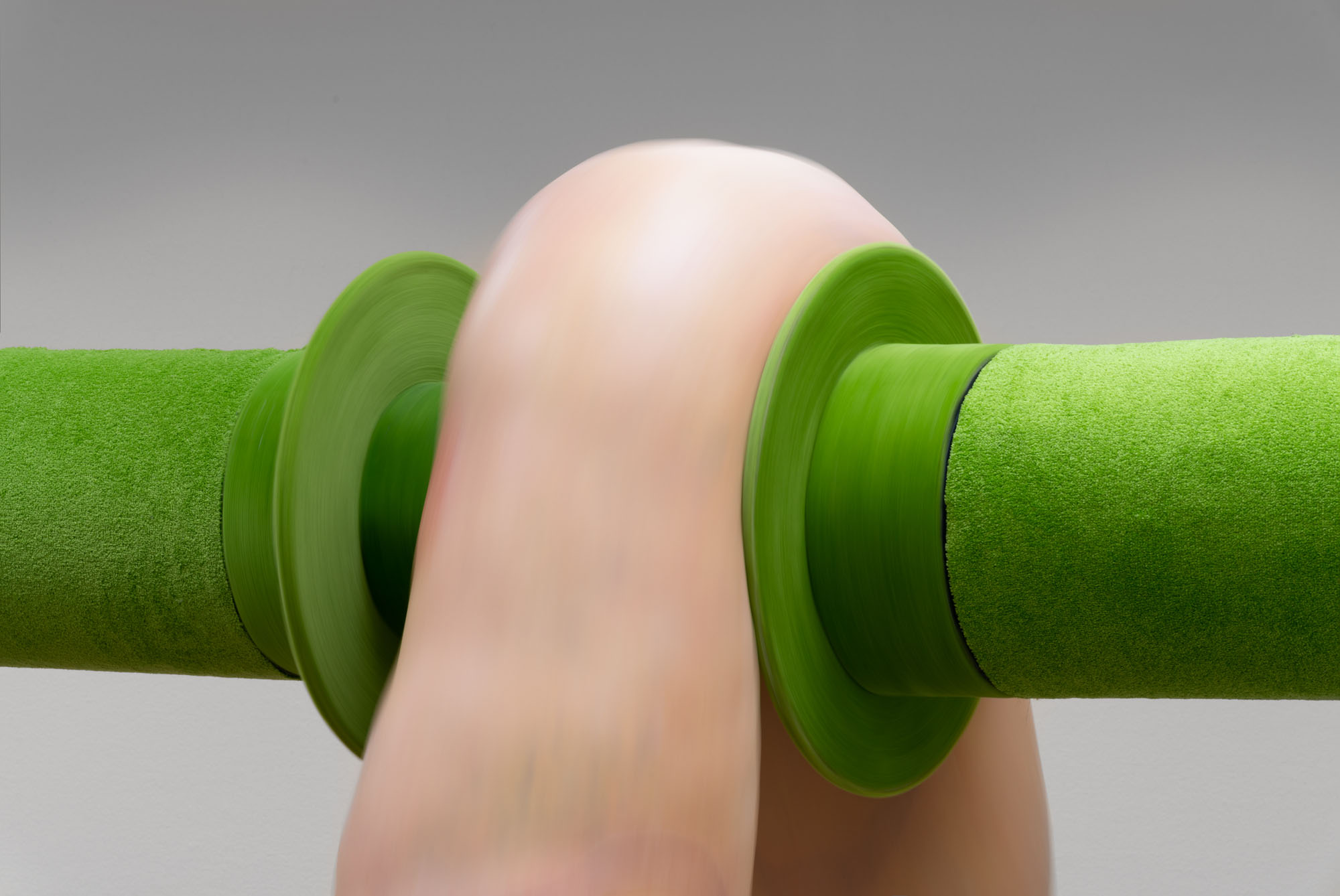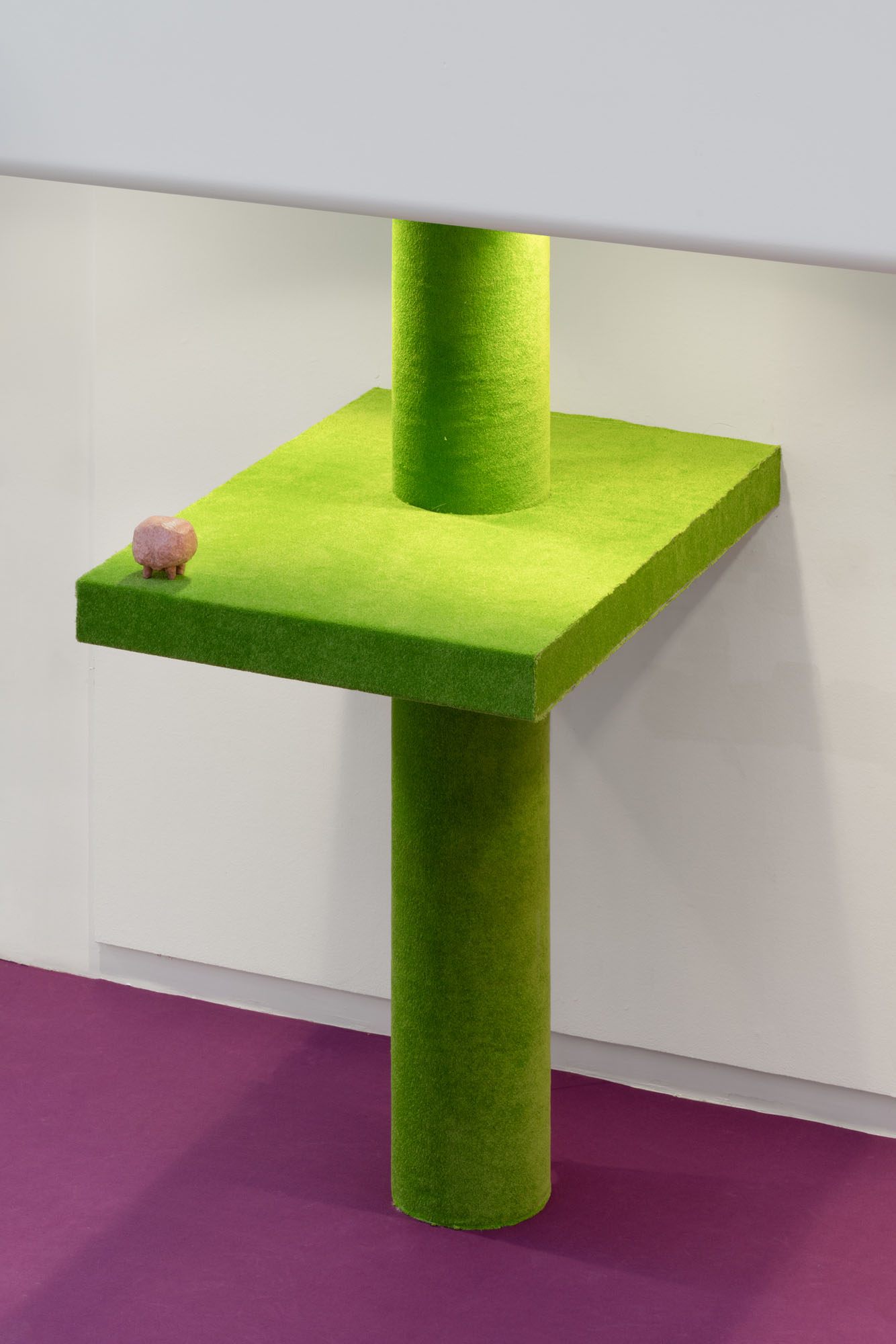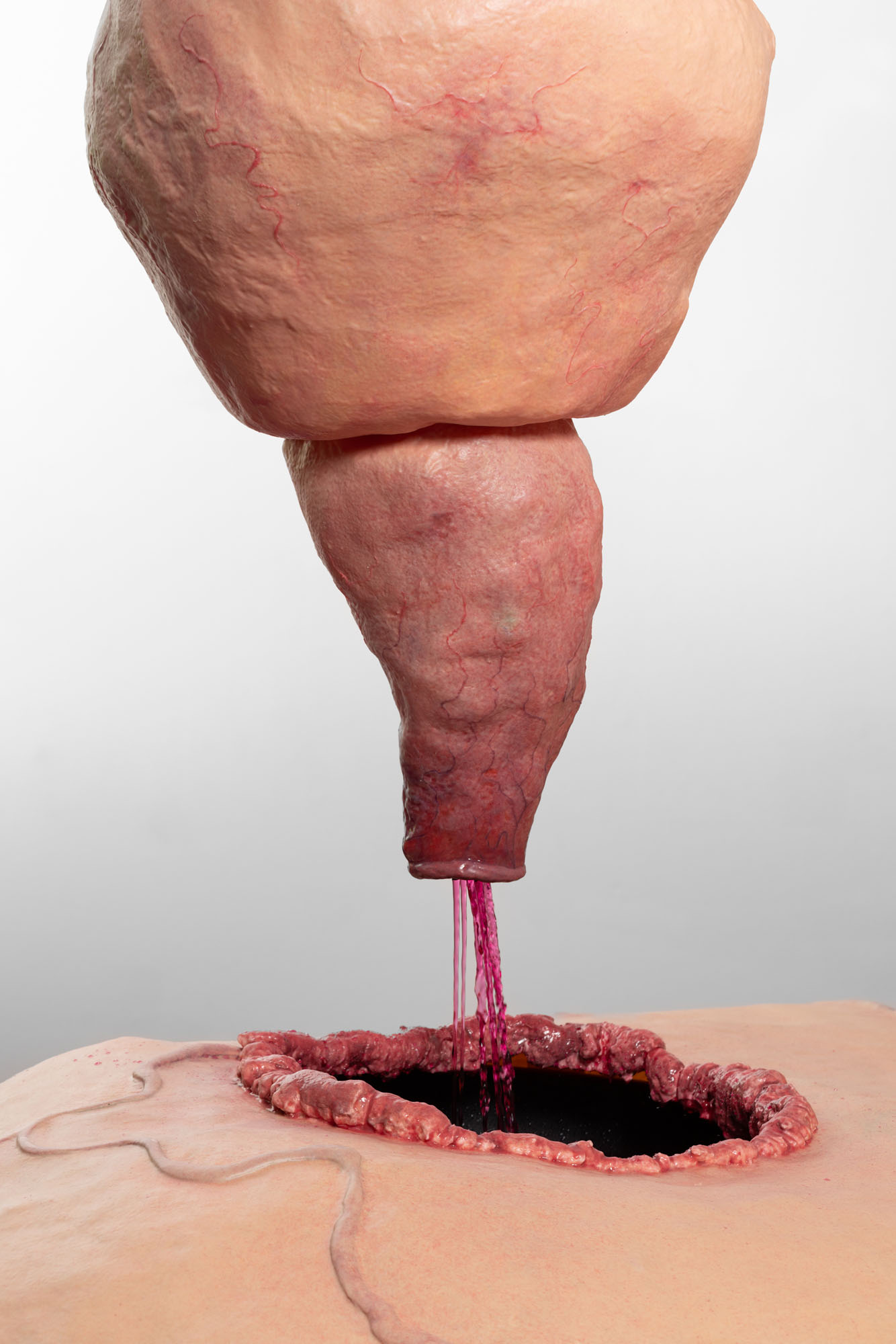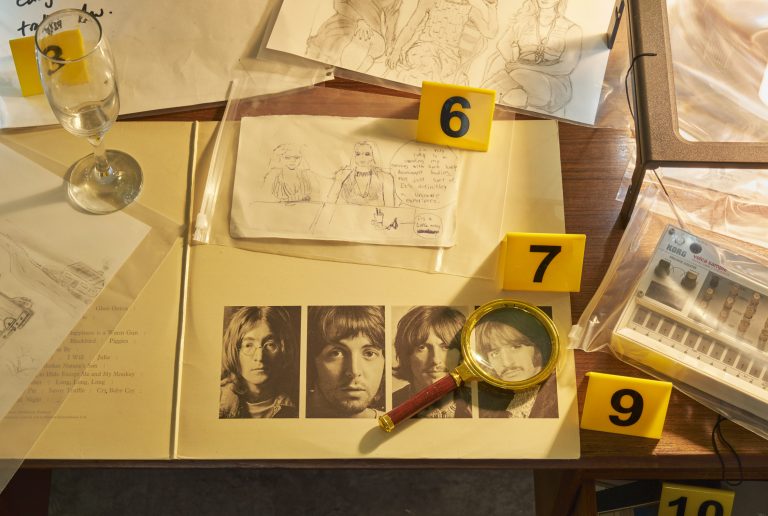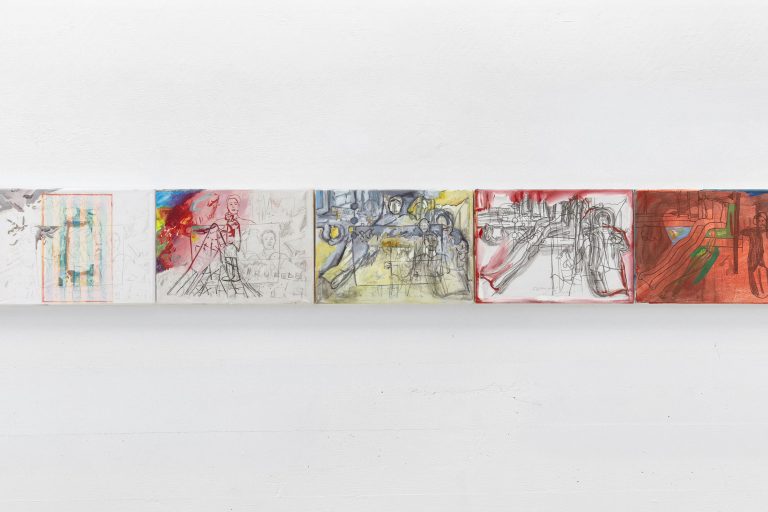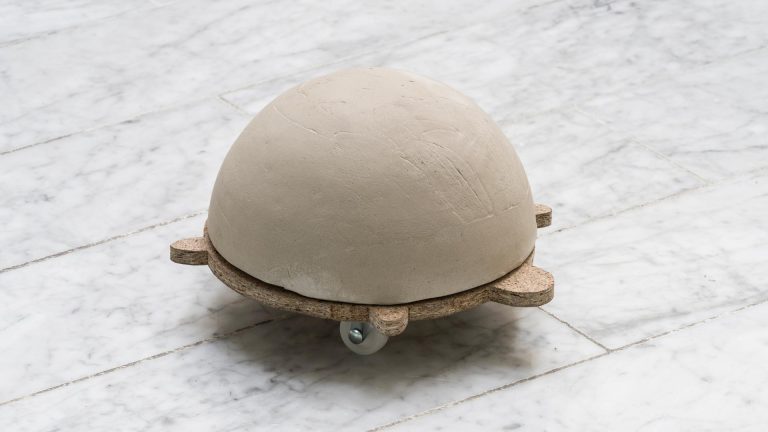Artist: Marie Munk
Exhibition title: Great Pets
Venue: Tranen Contemporary Art Center, Hellerup, Denmark
Date: December 13, 2019 – March 1, 2020
Photography: all images copyright and courtesy of the artist and Tranen Contemporary Art Center
Marie Munk’s first solo exhibition in Denmark unfolds as a fever dream about a future biotechnological world. The exhibition Great Pets is an installation that invites guests to enter a both familiar and alien landscape. The installation resembles one of today’s childproof playgrounds whose artificial grass and crass rubber concrete colors stage an oddly artificial and domesticated nature. The installation also recalls a zoological vivarium, where some animal species roams a caricature of its natural habitat. But, the total installation is neither made for kids nor animals. The landscape is inhabited by moving organisms that look lifelike, yet not reminiscent of any known form of life.
Marie Munk has crafted her strange creatures using layers upon layers of silicone dyed with pigment. They look synthetic though lively, animated by using mechanics. Their skin is true to nature but a nature unknown to man. The style is hyperrealism, but the reality presented in the exhibition is nowhere else to be found. As such, the show is not exactly an image of our present, but rather a presentiment of things to come.
Marie Munk is, among others, preoccupied by inventor and futurologist Raymond Kurzweil’s theory of an increasing convergence between genetics, nanotechnology, and robotic science – called GNR – predicted to spark a biotechnological revolution under the influence of a superior machine intelligence. The result will be an upgraded version of homo sapiens, including newfound immortality, which man at its present stage of evolution cannot yet grasp. However, Marie Munk’s version of this revolution is not simply an upgraded and optimized human being. The offshoot is, rather, a completely different being; a new species or race, which we cannot yet relate to or even grasp. Apparently, Marie Munk’s organisms lead a life of their own, which is difficult to comprehend. They are made by the artist, made by humans, but it is uncertain for whom they are made. They are at the same time both cute and uncanny. They may arouse feelings of both empathy and alienation – and probably, and in particular, both at the same time.
The title of the exhibition Great Pets might mean different things such as ‘fantastic pets’ or ‘large pets’. It might hint at the booming robotic pets-industry selling mechanic and reactive puppies to kids and baby seals to old people’s homes. But the title is also toying with an impossibility: for might pets not end up being so big that they outgrow their owners? The pets of Marie Munk have grown so large in size that they are almost no longer pets. Maybe the change in scale between humans and machines invokes changing power relationship between them? The question of who is petting whom may also be a question of who controls whom. People such as the Sci-fi author Samuel Butler (1835-1902) and the Apple founder Steve Wozniak (1950-) have not only given thought to whether we will treat technology the way we have hitherto treated dogs. They have also speculated about whether one day technology will treat us like dogs, like pets – for better or worse.
Great Pets can be seen as an experiment. In the 1890’s, Russian physiologist Ivan Pavlov (1849-1936) demonstrated how dogs can be trained to drool simply by use of sound or visuals. Today, big tech corporations expose how the human race can be trained to constantly check social media feeds. The exhibition also examines and exhibits the way in which humans, i.e. visitors to the show, respond to artificial pets.
When you arrive at Tranen’s ground floor, you will automatically raise your eyes and stare at the bigger creatures. When you move on to the first floor, you will gaze down upon them. When you move around in the exhibition, you might not only be close to – and eye to eye with – these fever dreams of a future biotechnological revolution. You may also look up to them or down upon them. One point of view may exclude another – or augment it.
The exhibition is accompanied by a selection of literature selected by Marie Munk and Tranen. Among others, there will be illustrated books by geologist and paleontologist Dougal Dixon (1947-), who has established himself as one of the founders of the genre ‘speculative evolution’ since his debut After Man: A Zoology of the Future (1981)
Toke Lykkeberg
Director of Tranen
Marie Munk (1988) lives and works in Copenhagen. She has studied at The Royal College of Art in London and is currently part of Tranen’s traveling exhibition EXTEMPORARY: Art out of time at the contemporary art center NCCA Arsenal in Nizhny Novgorod, Russia, in 2019 and at the contemporary art museum PERMM in Perm, Russia, in 2020.
Great Pets is the sixth exhibition in Tranen’s program about extemporary art. The focus is on contemporary art that is not primarily focused on our contemporary condition. When everything from climate to technology evolves at ever greater pace, the present becomes ephemeral and intangible. The present starts to shrink. Meanwhile, our knowledge of the past increases. Speculations about the future abound. As part of this development, a lot of art is no longer contemporary – which literally means ‘with time.’ Instead, art is rather ‘extemporary, i.e. ‘out of time’.
The exhibition is generously supported by Det Obelske Familiefond, Ragnvald og Ida Blix’ Fond, Den Hielmstierne-Rosencroneske Stiftelse, the Danish Arts Council and Danish Art Workshops.










